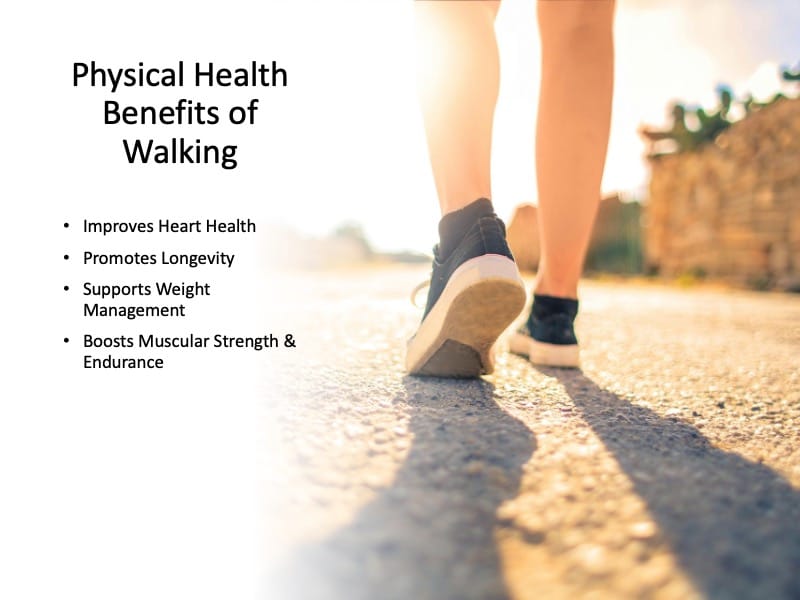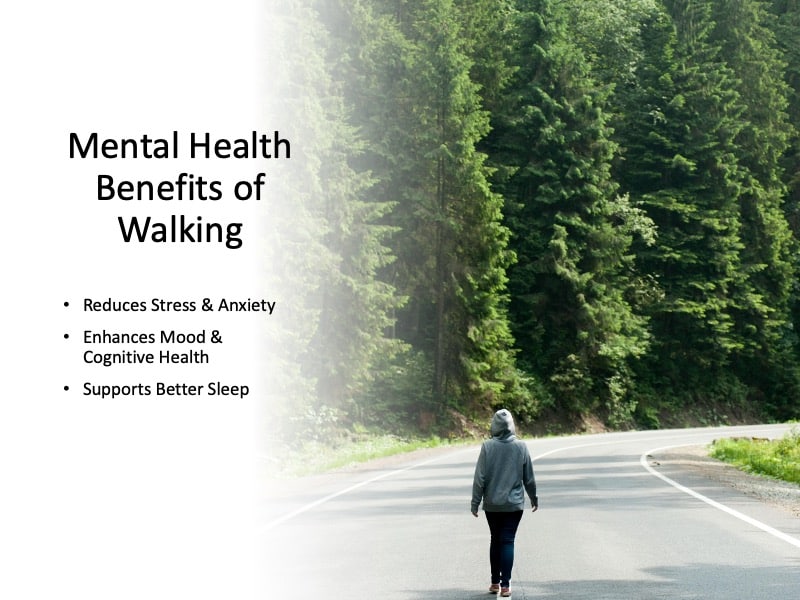Health Benefits of Walking: Why Is Walking Good for You?
Walking is one of the simplest and most powerful forms of exercise, yet its benefits are often overlooked. Even as a professional athlete, walking is probably my favorite form of exercise because it goes beyond fitness alone—it’s an experience I share with my family that enhances both our health and our bond.
My wife and I go for at least one or two walks every day, no matter where we are.
Whether we’re exploring a new city, immersing ourselves in nature, or just having quality time to discuss life, walking has become a meaningful part of our lives. It’s also one of the best ways for us to unwind from the day and reconnect with each other.
Now, as parents to our almost 5-year-old son, we’ve introduced him to the joy of walking, and it’s incredible to see him developing a love for it too.
He’s at an age where he can keep up, and these walks have quickly become a family tradition.
Together, we experience the physical and mental health benefits of walking, and it’s something we hope he will carry with him as he grows.
Walking has improved our health, strengthened our relationships, and created memories that wouldn’t be possible with any other form of exercise. It’s an activity I recommend to everyone, whether for fitness, mental well-being, or simply a way to connect with those you love.
With a growing body of research backing its effectiveness, walking is more than just a mode of transportation; walking is a low-impact exercise that supports a range of health goals and meaningful connections!
Physical Health Benefits of Walking

Walking provides foundational support for cardiovascular health, metabolism, and longevity.
Unlike high-intensity exercises, walking is gentle on the joints, making it an ideal activity for people of all fitness levels and ages.
Improves Heart Health
Walking has been shown to significantly benefit cardiovascular health by improving circulation and helping reduce blood pressure (American Heart Association).
Regular walking lowers LDL cholesterol levels (the “bad” cholesterol) and helps raise HDL cholesterol, protecting against heart disease. A brisk 30-minute walk each day can help reduce the risk of heart-related issues and stroke.
Promotes Longevity
A meta-analysis in The Lancet Public Health revealed that walking reduces all-cause mortality risk, with benefits evident at step counts below the widely recommended 10,000 steps per day.
For adults over 60, health benefits plateaued around 6,000-8,000 steps, while younger adults saw similar benefits at 8,000-10,000 steps per day (Paluch et al., 2022).
By tailoring goals to age and ability, walking becomes a highly adaptable exercise that supports longer, healthier lives.
Supports Weight Management
Walking can be effective for weight loss and weight management when done consistently, especially when combined with a balanced diet.
A person weighing 160 pounds burns roughly 100-120 calories per mile of moderate walking, but factors like pace, terrain, and incline can increase calorie burn.
Uphill walking or brisk walking can accelerate fat loss, making it easier to achieve a healthy weight without extreme diets or workout regimens.
Boosts Muscular Strength & Endurance
Walking engages multiple muscle groups, including the calves, quadriceps, hamstrings, and glutes.
Walking on inclines or incorporating intervals helps strengthen the lower body while enhancing endurance.
For additional benefits, using walking poles engages the upper body, providing a low-impact full-body workout that supports muscular health.
Mental Health Benefits of Walking

The mental health benefits of walking are equally profound.
It’s well-established that regular physical activity can elevate mood and reduce symptoms of anxiety and depression, but walking provides unique mental health advantages.
Reduces Stress & Anxiety
A leisurely outdoor walk or brisk stroll offers a valuable opportunity to clear the mind and reduce stress.
Studies have shown that exposure to natural surroundings can lower cortisol levels and improve mental well-being, making outdoor walking a particularly effective natural stress reliever.
Enhances Mood & Cognitive Health
Walking stimulates the release of endorphins and other neurotransmitters, which can boost mood and enhance mental clarity.
A consistent walking routine has been linked to improved cognitive function, especially in older adults, helping reduce the risk of cognitive decline and memory loss.
This natural cognitive boost can support productivity, creativity, and problem-solving skills.
Supports Better Sleep
Walking can improve sleep quality, which is critical for mental and physical health.
Engaging in moderate exercise like walking during the day can help regulate the body’s internal clock and promote restful sleep.
Unlike high-intensity workouts, which can be too stimulating if done late in the day, a walk in the evening can relax the body and prepare it for sleep.
How Many Steps Should You Take Per Day?
The optimal number of daily steps can vary based on age, fitness level, and health goals.
While the widely promoted 10,000 steps per day is a helpful general target, recent studies indicate that health benefits can be achieved at different step counts depending on individual factors.
- For Adults Under 60 Years
Research published in The Lancet Public Health suggests that younger adults see substantial health benefits from around 8,000-10,000 steps per day. Walking at this range has been associated with lower risk of mortality and improved cardiovascular health, though benefits plateau at 10,000 steps (Paluch et al., 2022). - For Adults 60 Years and Older
For older adults, significant health improvements have been observed at 6,000-8,000 steps per day, with mortality risk reduction leveling off after about 8,000 steps. These lower targets are often more achievable and still provide cardiovascular and mobility benefits without risking overexertion. - For Beginners or Those with Limited Mobility
For individuals new to exercise or those with mobility issues, starting with 4,000-5,000 steps per day can deliver cardiovascular and metabolic benefits. Gradually increasing step count by 500-1,000 steps each week can foster long-term adherence and reduce the risk of injury. - For Weight Management and Fitness
Walking with a goal of 10,000 or more steps daily can aid in weight management and improve endurance, especially when combined with brisk walking or interval training. This higher step count promotes calorie burn and supports lean muscle maintenance.
How to Make the Most Out of Your Walks

To maximize the health benefits of walking, consider these practical tips:
Walk at a Brisk Pace
Walking briskly, or at a pace of around 3-4 miles per hour, increases heart rate, engages more muscles, and enhances cardiovascular benefits.
Brisk walking can be a gentle yet effective cardio workout, particularly suitable for those easing into exercise routines or recovering from injuries.
Incorporate Intervals or Hills
Adding intervals—alternating between normal and brisk paces—can boost calorie burn and improve cardiovascular fitness.
Walking uphill or using an incline on a treadmill strengthens the legs and glutes, adding variety to the workout and enhancing endurance.
Use Walking Poles for Extra Engagement
Walking poles offer stability on uneven terrain, but they also provide a full-body workout by engaging the arms, shoulders, and core.
This low-impact upper body activation can make walking a more dynamic, full-body exercise suitable for any fitness level.
Stay Mindful of Posture
Good posture during walking supports spinal health and ensures that the body moves efficiently.
Keep your shoulders relaxed, your core engaged, and your head up to prevent slouching. This helps improve breathing, reduce strain, and prevent discomfort.
Walking Indoors vs. Outdoors: Which Is Better?
Whether to walk outdoors or on a treadmill depends on personal goals and circumstances.
Walking outdoors provides added mental health benefits, as exposure to nature has been shown to reduce stress and improve mood. Uneven surfaces and slight inclines also engage stabilizing muscles, offering a more varied workout.
Conversely, walking on a treadmill allows for precise control over speed and incline, making it ideal for targeted cardiovascular training or for staying active during inclement weather.
For those looking for alternatives to treadmills, indoor walking tracks, staircases, and even walking at home or in place can offer flexibility and convenience.
Each alternative provides unique benefits, such as improved balance on staircases or the ease of adapting pace at home, allowing for variety while still supporting fitness goals.
Final Thoughts: Is Walking a Good Exercise for You?
Walking is far more than a way to get from point A to point B; it’s an incredibly versatile, accessible, and low-impact form of exercise that benefits people of all ages and fitness levels.
Whether you’re aiming for the popular 10,000-step target or simply striving to be more active, walking can help you manage your weight, improve cardiovascular health, and enhance mental clarity.
For me, walking is a staple in my daily routine, a practice that has evolved into a cherished family activity that keeps us physically fit and emotionally connected.
To make walking an even more rewarding experience, consider customizing your routine with small adjustments. Adding intervals, incorporating hills, or focusing on mindful posture can all intensify the workout and increase its benefits.
Even walking outdoors when possible can make a difference, as exposure to natural light and fresh air boosts mood and provides a refreshing break from daily routines.
For extra motivation, gamifying your walks through apps like SweatCoin can be an excellent way to stay committed to your walking goals.
These apps transform every step into a measurable achievement, providing incentives such as rewards, points, or digital currency that can be redeemed for real-world products or services.
SweatCoin, for example, rewards users with points for each step taken, adding a fun, goal-oriented twist to each walk.
Gamifying your walking routine not only makes tracking steps more enjoyable but also provides tangible goals that can keep you engaged and motivated, especially on days when staying active feels like a challenge.
Whether you’re just starting or looking to reinforce a long-standing habit, walking can be a powerful tool for lifelong health and wellness.
Small adjustments and motivation boosters like fitness apps can turn walking into a rewarding daily ritual—one that supports physical health, mental well-being, and, for some of us, even family togetherness.
Walking truly is a habit worth cultivating for life!



